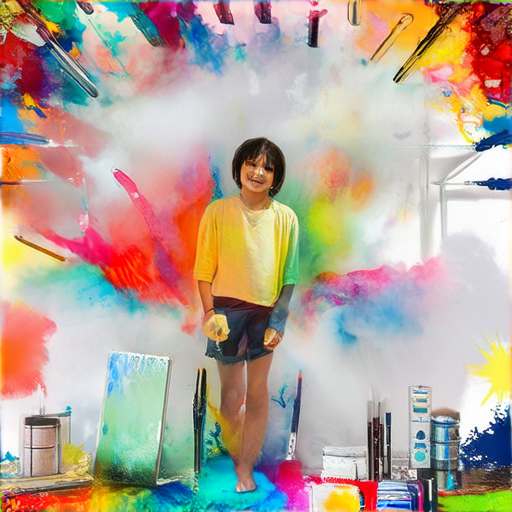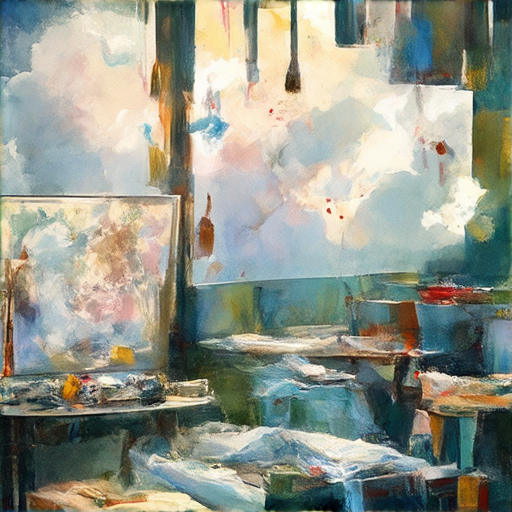As a budding artist, navigating the world of art can seem overwhelming, especially for those just starting out. However, having access to the right art supplies and learning the basics of art can make all the difference in bringing your creative vision to life.
From choosing the perfect paints to mastering various brush strokes and textures, understanding what works best for you is crucial in developing your unique style. In this comprehensive guide, we’ll delve into the essential painting supplies for beginners, explore different art styles, and provide valuable tips on how to improve your drawing skills.
We’ll cover topics such as color theory, brush strokes, and digital art tools, giving you a solid foundation to build upon. Whether you’re interested in resin art, acrylic pour painting, or traditional mediums like oil or watercolor, our expert advice will help you unlock your full artistic potential.
By the end of this guide, you’ll have a better understanding of the best art supplies for beginners, how to create stunning pieces of art, and the confidence to continue exploring your creativity. So, let’s get started on this artistic journey together!

Getting Started with Art Supplies as a Beginner
- Art Supplies for Beginners
- As a beginner, it can be overwhelming to choose the right art supplies.
- Start with basic materials like pencils, erasers, markers, and paints.
- Basic Pencils Set
- Invest in a sketchbook and a set of high-quality brushes.
- Artist Brushes
- Experiment with different mediums and techniques to find what works best for you.
- Drawing Tutorials
- Join online communities and forums to connect with other artists and learn from their experiences.
- Artists Network Community
- Take classes or workshops to improve your skills and gain confidence.
- Painting Classes
- Remember, practice makes perfect, so keep creating and experimenting until you find your style.
Recommended Brands for Beginners
Additional Tips
- Always read reviews and do your research before making a purchase.
- Invest in high-quality materials that will last longer.
- Don’t be afraid to try new things and take risks in your art.
The 7 Rules of Art
- Balance refers to the arrangement of visual elements in a composition to create a sense of stability and equilibrium.
- Contrast involves the use of different visual elements, such as color, shape, and texture, to create a visually appealing effect.
- Emphasis is the focal point in a composition that draws the viewer’s attention and creates a sense of importance.
- Movement refers to the sense of energy and dynamism created by the arrangement of visual elements in a composition.
- Pattern involves the repetition of similar visual elements, such as shapes or colors, to create a cohesive and harmonious effect.
- Rhythm refers to the way in which visual elements are arranged to create a sense of tension and release.
- Unity involves the creation of a cohesive and harmonious whole through the use of similar visual elements, such as color, shape, and texture.

Where Should a Beginner Start in Art?
I’m excited to share my journey as an artist, and I hope to inspire yours too.
- Start with fundamental concepts such as shapes, perspective, and proportion, which will provide a solid foundation for further learning.
- Online courses and tutorials can be a great resource for beginners, offering structured lessons and feedback from experienced instructors.
- Figure drawing and anatomy are essential skills for any aspiring artist, and there are many excellent resources available online, such as Proko’s figure drawing course.
- Practice regularly and experiment with different mediums and techniques to develop your unique style and voice.
A Long-Term Roadmap for Artists
As an artist, it’s essential to have a clear vision and goals for your career.
- Create a personalized plan outlining your short-term and long-term objectives, including setting achievable milestones and deadlines.
- Build a strong online presence by creating a professional website showcasing your work and sharing your story with potential clients and fans.
- Stay inspired by following fellow artists, art bloggers, and galleries on social media platforms like Pinterest and Instagram.
- Join a community of like-minded artists, either online or in-person, to connect with others, receive feedback, and stay motivated.

The 13 Rule in Art
The 13 rule in art refers to a lesser-known principle used in composition, particularly in drawing and painting. While the rule of thirds is widely recognized, the 13 rule provides an alternative approach to balancing elements within a piece of art.
Understanding the 13 Rule
To apply the 13 rule, imagine a grid with 12 equal sections, divided into three rows and four columns. The main subject or focal point should be placed along one of the vertical lines, rather than being centered. This allows for greater flexibility and balance in the composition.
Key Considerations
When applying the 13 rule, consider the following factors:
- Balance and symmetry: The 13 rule helps create a sense of balance and harmony in the composition.
- Visual weight: The placement of the main subject affects its perceived visual weight, which can impact the overall balance of the piece.
- Negative space: Leaving space around the subject can enhance its appearance and create a sense of breathing room.
Examples and Applications
The 13 rule has been employed by various artists throughout history, including renowned painters such as Leonardo da Vinci and Vincent van Gogh. In modern times, the rule remains a useful tool for artists seeking to create visually striking compositions.
Conclusion
While the 13 rule may not be as widely recognized as the rule of thirds, it offers a unique perspective on composition and balance. By understanding and applying the principles of the 13 rule, artists can create visually stunning pieces that engage and captivate audiences.
The Golden Rule in Art
The concept of the golden rule in art refers to the principle of proportion and balance, which is achieved by dividing a line or shape into two parts such that the ratio of the longer part to the shorter part is approximately equal to the ratio of the shorter part to the longer part. This mathematical relationship is often seen in nature, architecture, and art, and has been employed by artists and designers throughout history.
Leonardo da Vinci’s Use of the Golden Ratio
Leonardo da Vinci was a renowned artist who extensively studied the golden ratio and its application in art. He believed that the golden ratio held the key to creating aesthetically pleasing compositions and proportions. Da Vinci’s famous painting, the Mona Lisa, is a prime example of his use of the golden ratio in composition.
Artistic Applications of the Golden Rule
The golden rule has numerous applications in various fields of art, including painting, sculpture, architecture, and graphic design. Artists use the golden ratio to create balanced and harmonious compositions, which can evoke emotions and convey meaning.
- Painting: The golden ratio is often used to determine the placement of subjects, colors, and textures in a painting.
- Sculpture: The golden ratio can be applied to the proportions of a sculpture, creating a sense of balance and harmony.
- Architecture: The golden ratio is used in the design of buildings and structures, creating a sense of proportion and balance.
- Graphic Design: The golden ratio can be applied to the layout and composition of graphics, creating a visually appealing and balanced design.
Competitors and Best Practices
When discussing the golden rule in art, it is essential to consider the work of other artists and designers who have also employed this principle. Some notable examples include:
By understanding the principles of the golden rule and its applications in art, artists and designers can create compositions that are both aesthetically pleasing and meaningful.
Conclusion
The golden rule in art is a fundamental principle that has been employed by artists and designers throughout history. By understanding the principles of the golden ratio and its applications in various fields of art, artists can create compositions that are both aesthetically pleasing and meaningful.
What is Art Formula?
The concept of art formula refers to a set of principles or guidelines that an artist uses to create consistent and high-quality works.
- An art formula can take many forms, such as a specific technique, color palette, or composition style.
- For example, an artist may develop a personal formula for creating portraits, involving a combination of brushstrokes, layering, and color choices.
Benefits of Using an Art Formula
Developing an art formula can have several benefits for artists, including:
- Increased efficiency: By having a clear understanding of the principles involved, artists can work more quickly and confidently.
- Improved consistency: An art formula helps to ensure that artworks meet certain standards, leading to increased consistency and professionalism.
- Enhanced creativity: Having a solid foundation of principles allows artists to explore new ideas and styles within the framework of their formula.
Examples of Art Formulas
Some well-known examples of art formulas include:
- The Impressionist formula, characterized by short, broken brushstrokes and vivid colors.
- The Cubist formula, marked by geometric shapes and fragmented forms.
- The Abstract Expressionist formula, defined by spontaneous gestures and expressive colors.
Creating Your Own Art Formula
To develop your own art formula, consider the following steps:
- Experimentation: Try out different techniques, materials, and styles to see what works best for you.
- Analysis: Study the work of other artists and identify common patterns and principles.
- Refinement: Refine your formula based on feedback and self-reflection.

0 Comments